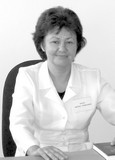Characteristics of physical progression in martial arts
Keywords:
anthropometry, somatotype, physical development, boys, judo, taekwondo.Abstract
Objective of the study was to contrast the physical growth metrics of athletes who practice judo and taekwondo.
Methods and structure of the study. Fifty-seven young men, aged between 17 and 21, who specialize in judo and taekwondo, and who have achieved the first-adult category in their respective sports, were examined. All participants underwent necessary anthropometric measurements. The somatotype was assessed using the Hit-Carter method. The athletes' respiratory function was evaluated through spirometry, and their hand grip strength was measured using dynamometry. The index method was employed to evaluate their physical development.
Results and conclusions. Judoists in the middle weight categories, aged 17 to 21, tend to have a well-proportioned physique, while taekwondo athletes often have a more athletic build. Additionally, judoists tend to have a higher percentage of muscle mass compared to taekwondo athletes. The physical characteristics of martial artists are more influenced by their body type than by their specific sport.
There were notable differences in the vitality index between athletes with balanced mesomorphic and endomorphic body types, as well as between athletes with balanced mesomorphic and ectomorphic body types. Similarly, there were differences in the body mass index between athletes with ectomorphic and endomorphic body types. Furthermore, there were variations in the proportionality of development between athletes with balanced mesomorphic and ectomorphic body types, as well as between athletes with ectomorphic and endomorphic body types.
References
Antonov S.G. Formirovaniye vybora sportivnoy spetsializatsii v yedinoborstvakh. Monograph. SPbGAFK im. P.F. Lesgafta publ., St. Petersburg, 1997. 147 p.
Afanasyeva I.A. Geneticheskiye osobennosti treniruyemosti tkhekvondistov i ikh sportivnyy otbor. Monograph. SPbGAFK im. P.F. Lesgafta publ., St. Petersburg, 2004. 96 p.
Kuvanov V.A. Zaytsev A.V., Ilyushchenko S.A., Murasheva M.V. Otsenka fizicheskoy podgotovlennosti kvalifitsirovannykh bortsov-yuniorov volnogo stilya kak sredstvo effektivnogo upravleniya uchebno-trenirovochnym protsessom. Teoriya i praktika fizicheskoy kultury. 2024. No. 4. pp. 21-23.
Rudenko G.V., Tkachuk M.G., Dorofeyev V.A. Morfologicheskiye pokazateli uspeshnosti sorevnovatelnoy deyatelnosti v yedinoborstvakh. Teoriya i praktika fizicheskoy kultury. 2020. No. 4. pp. 92-94.
Sologub E.B., Taymazov V.A., Afanasyeva I.A. Sportivnaya genetika. St. Petersburg: Politekhnicheskogo universiteta publ., 2017. 166 p.
Tkachuk M.G. Levitskiy A.G., Sobolev A.A. Individualno-tipologicheskiye osobennosti bortsov s razlichnoy treniruyemostyu. Uchenyye zapiski universiteta im. P.F. Lesgafta. 2018. No. 3. pp. 288-292.
Carter J. The Heath-Carter anthropometric somatotype. Canada. 2002. 22 p.

Additional Files
Published
How to Cite
Issue
Section
License
Copyright (c) 2025 Theory and Practice of Physical Culture

This work is licensed under a Creative Commons Attribution 4.0 International License.
